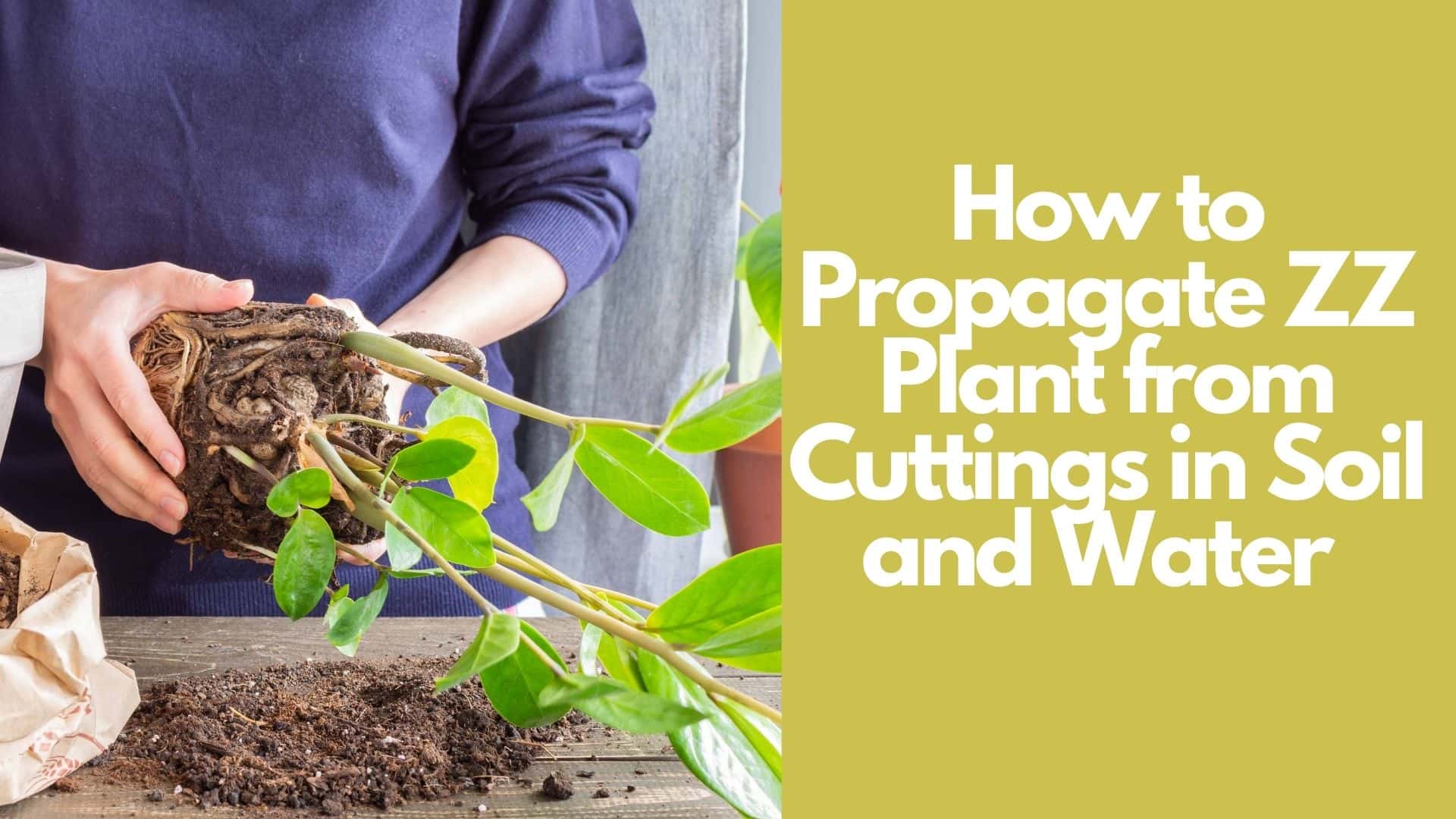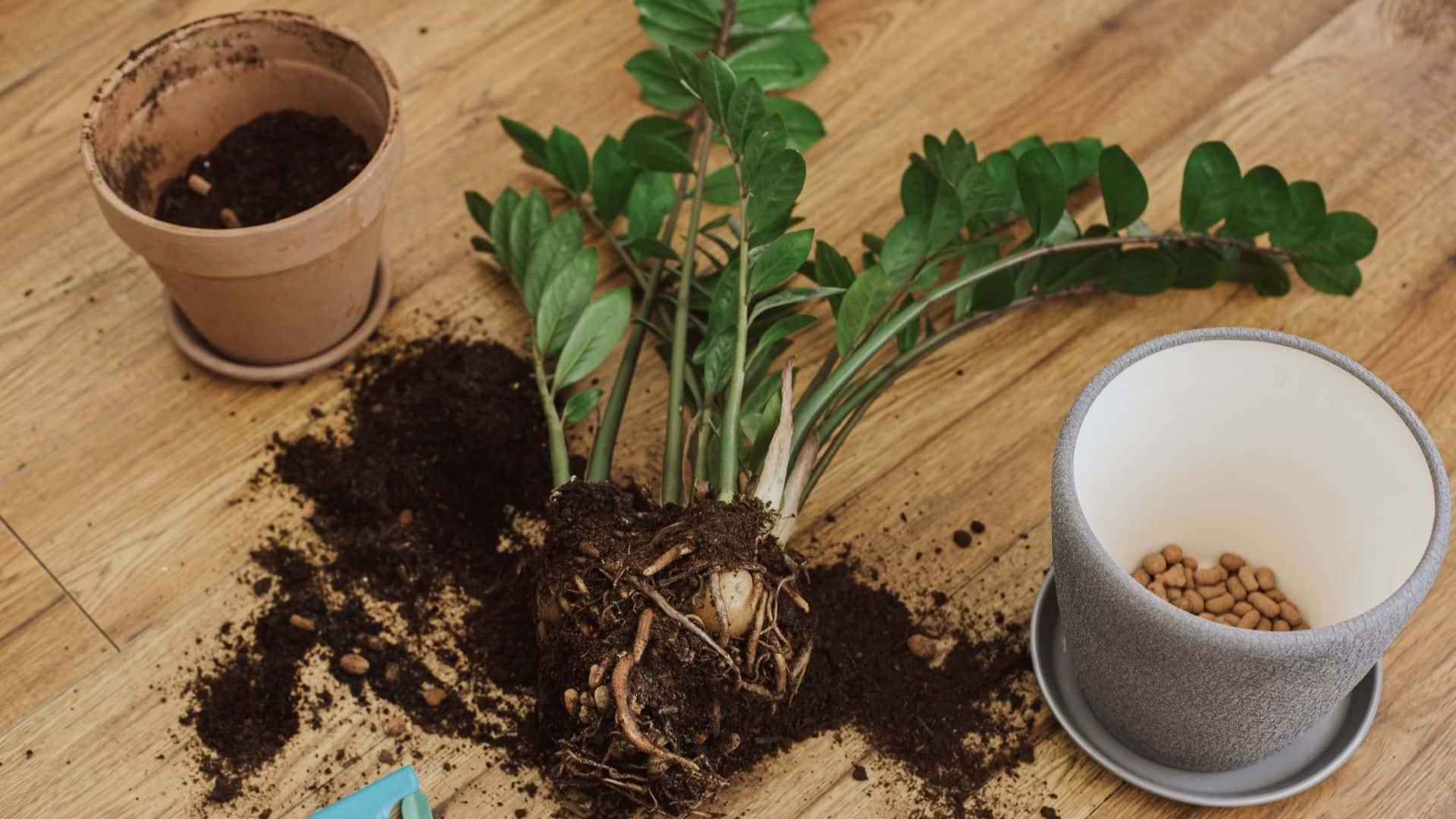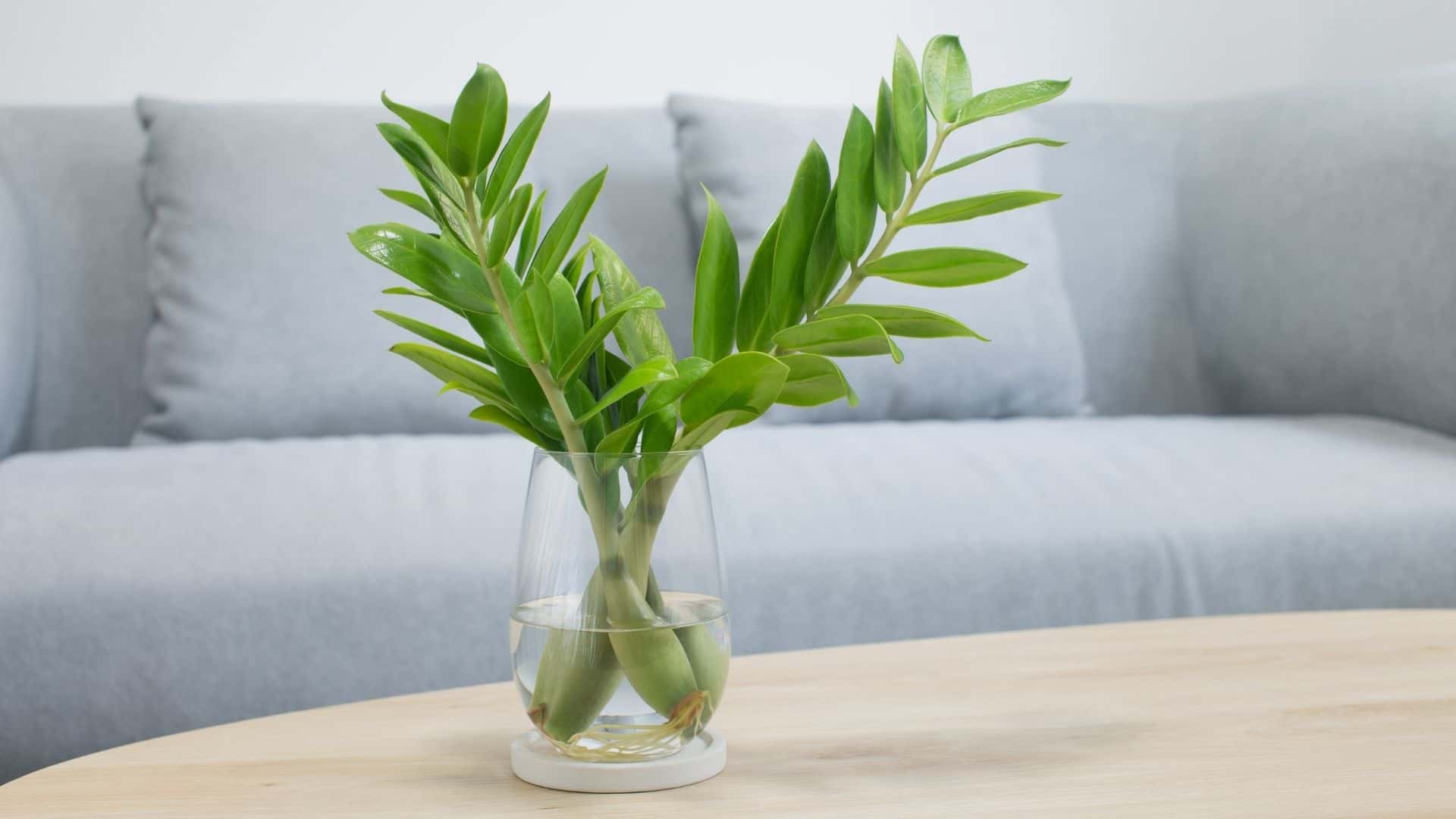The ZZ plant is one of the few houseplants that can grow even when neglected. Zamioculcas zamiifolia is also known as aroid palm or by its botanical name. ZZ plant is a hardy tropical perennial that tolerates a wide range of watering regimes and light levels. With its lustrous deep-green leaves, the ZZ plant may be used in a variety of settings, from fluorescent-lit offices to an open-plan living room.
Although ZZ plants grow slowly, their adaptability and low maintenance make up for it. Two to four feet in height and width are typical for these plants at full maturity. You can take pleasure in watching the new leaves emerge.
Consisting of a central shoot that grows directly from the soil and has long, spreading compound leaves made up of tiny leaflet segments.
As a houseplant, ZZ plants are suitable for novice gardeners or those who live in places where optimal care may not be possible, such as offices, waiting rooms, restaurants, and rental properties. As a bonus, they have been found to improve indoor air quality and remove volatile organic pollutants.
ZZ plants can be propagated easily, therefore it’s easy to see the appeal. You need to know how to propagate ZZ plants if you want to grow them. To save a stem, leaf, or seeds, you may wish to plant them in a new pot, or you may inadvertently break one and want to save it and start over. ZZ plants can be propagated in a number of ways. Grow your own ZZ plants by learning how to propagate them. By reading this guide, you will be able to know, How to Propagate ZZ Plant from Cuttings in Soil and Water.

Let’s start,
Summer is the best time to propagate any type of houseplant. At this time of year, they are actively expanding; growth slows down over the winter.
Despite the fact that zamioculcas zamiifolia plant propagation is simple, it can take a long time. For weeks, there may be no movement at all. There is no need to worry if the portion of the plant you are propagating doesn’t appear healthy (even if new growth has not appeared). These plants require a lot of patience.
What does ZZ plant need to propagate?
- Sanitized sharp knife or shear
- Small trowel or Transplanting shovel
- Container with water
- Container for planting
- Potting mix
What are the methods of propagating the ZZ plants by cuttings?
Cuttings can also be used to propagate ZZ plants. It’s the easiest approach to get a lot of new plants out of a single species. However, the slow rate of growth of these plants is a drawback. Cuttings can take up to a year to root, so plan on this being a long-term undertaking.
1. Leaf Cutting
Leaf propagation necessitates the use of sterilized pruning shears or a sharp knife. It’s a good idea to wash and dry your scissors and knife once they’ve been stowed away. Plants may become infected or moldy if the blade is contaminated with dirt or germs.
Before making any cuttings, inspect the ZZ Plant’s leaves. Recommend choosing leaves that are full, dark green, and shiny. Propagation should be avoided if the leaves are beginning to turn yellow, curl, or brown, or if they are linked to an unhealthy stem. In order to make propagation easier for the plant, you want it to have the best possible start.
The ideal number of leaves to propagate is 4-6. A larger pot when the leaves take root will boost your chances of success.
How to root leaf cuttings in water?
ZZ plant leaves can be propagated in water in a variety of methods. It’s also possible to simply put the leaves in water and let them do their own thing.
Cut the bottom fourth of each leaf cleanly to encourage new development as a second option. In this case, you should wait until the leaves have completely healed before putting them in the water.
How to root leaf cuttings in the soil?
Leaf cuttings can be usually rooted well by growing them in the soil.
Cut as near to the stem as possible while taking a viable leaf cutting. It’s much more ideal if you can remove some of the stems.
For a few hours, allow it to scab while you prepare a potting medium that’s ideal for rooting draining soil is essential. Adding perlite, vermiculate, and peat to the mixture will give it a lighter feel, as well as ensure good drainage.
Put the leaves on the surface of the soil and then fill the surface of the soil. Place it on a windowsill till it grows. Wait for the rhizomes to form, which can take up to 6 to 9 months.
2. Stems Cutting
Propagation of a ZZ Plant will be faster if you use stem cutting. A ZZ plant cutting can be propagated easily in your home.
First, make sure to select items that are at least 5 inches long and have at least 2 healthy leaves. Cut a stalk of the mother plant with a sterilized knife or pair of scissors.
After cutting, it is good to keep the stem for about a few hours. Some it keeps a few days or even weeks. It’s not a need, but it does reduce the risk of rot.
How to root stem cuttings in water?
The soil approach and the water method are the two alternatives you have once your stem cuttings are ready. Neither of these tasks is particularly challenging.
It’s as simple as putting the stem cuttings you just made into a container or glass of water for this procedure. In order to ensure that the cut ends are completely covered, you just need a small amount of water. Once or twice a week, make sure to replace the water in the container.
Allow plenty of bright, indirect light to shine on the cutting. The greatest approach to making your ZZ cutting grow is in direct sunlight.
There is a wide range in the amount of time it takes for new roots to form, so be prepared to wait. For the roots to develop long enough to warrant repotting, they can take up to two months or more to begin moving.
At least one inch of new roots has formed on your cutting by the time it’s time to repot. The first roots take at least three weeks to form, and it will take another three weeks for them to reach a length of one inch. As soon as the roots have grown more than an inch long, carefully transplant the plant into a container.
How to repot stem cuttings in the soil?
Every plant needs better drainage to grow healthy. Make sure you have drainage holes in the bottom of your pots.
Fill the pot with two inches of potting soil. Your plant’s roots will have more room to expand with this. Choosing the right potting soil for your houseplants is essential if you want them to thrive and live a long time.
Gently press the rooted cuttings into the soil of the pot, ensuring that they are firmly planted. Multiple stems can be arranged in a single pot to resemble the original plant you purchased from the store if you choose.
For further support, add a small amount of soil around each stem. When all stems have been inserted, fill the pot with soil, but do not fill it all the way to the rim of the pot.
Then, give everything a good rinse with plenty of water. To guarantee that all of the roots get the same amount of water, run the stream of water around the pot’s rim and then add a line down the center of the diameter.
What are the other ways that use to propagate ZZ plants?
Apart from cuttings, division and seeds can be used to propagate ZZ plant successfully.
1. Dividing rhizomes

You can divide a healthy ZZ plant into two, three, or smaller plants, depending on the size of the mother plant and the number of baby plants you want to generate, if it’s huge and healthy. Use this procedure sparingly, as dividing a plant that is too little or immature can result in the plant being damaged.
After removing the mother plant from its present pot, gently turn the container over on its side to remove it. Take hold of the base of the leaves, and gently lift the pot from the roots. With a digging knife, shovel, or utility knife, loosen the soil around the pot’s edge.
While holding the plant at its base, carefully loosen the root ball and remove any excess soil from it with your other hand. To get rid of any decayed or shriveled roots, use pruning tools like pruners.
Natural points of division can be found by inspecting the root ball for the fewest number of cuts necessary for the separation of young plants’ root systems. You can use a utility knife to carefully see through the root ball and rhizomes at the point where they separate. But it is better to use your fingers to separate them slowly.
Then get some fresh potting soil and fill two or three smaller pots with it.
Each portion of the plant should be placed in an appropriate container with fresh soil and a watered well. Maintain the plant in the same way you normally would.
2. Sowing seeds of ZZ plant
Even though this is the most difficult technique of propagation due to the difficulty in harvesting seeds, it is nevertheless an alternative for those who wish to test it out.
Your ZZ plant may not even blossom or generate seeds if grown inside, thus this is a problem. It’s also difficult to find pollinating insects in our houses, which is a problem because they’re necessary for a plant to produce seeds.
You’ll need to germinate ZZ plant seeds if you bought them or grew them yourself. Sow the seeds in the well-draining potting mix, water the soil regularly, and watch the plant grow. It takes around seven days for seeds to germinate.
How to care for propagated ZZ plants?
Here are essential caring tips for ZZ plants that help to grow healthy and successful in your garden. Follow all of these perfectly.
1. Sun exposure
Most common houseplants, including ZZs, thrive in bright, indirect sunshine. This indicates that they’ll thrive in a location with plenty of natural light.
Plants can be protected from the sun’s harsh rays by simply keeping them a few feet away from windows that receive direct sunlight. This helps to keep the leaves from being discolored or burnt.
2. Watering
When it comes to watering plants, there’s no such thing as overdoing it. ZZ Plants don’t require a lot of water because their rhizomes store water for them. As a matter of fact, over-watering might lead to the death of your plant’s roots and rhizomes.
Instead, wait until the first few inches of potting soil are dry before watering. Typically, this occurs every two weeks, however, this might vary depending on the weather and the season. The cuttings you’ve taken from your ZZ Plants are still young plants. Unlike adult Zamioculcas Zamiifolia, they will not require as much water as young plants.
How much water do you think is too much? If you mist your ZZ Plant, take a look at the leaves and see if anything changes. The leaves of your cuttings may be wrinkling because they need more water. Cut back on water if you see yellowing or dropping leaflets, as too much moisture in the soil might cause the meaty rhizomes to rot.
3. Soil
Keep in mind to use fertile soil for ZZ plants. They aren’t fussy about the soil, as long as it drains adequately. Make the soil even airier by adding bark or perlite.
5. Fertilizing
To help your cuttings grow, you may want to add some fertilizer as well. Consider using a store-bought fertilizer once every six months. It is important to keep in mind that your ZZ cuttings are just beginning to grow and do not require a lot of fertilizer.
If you notice yellowing or other unfavorable changes in your plants’ leaves after using a modest amount of diluted fertilizer, you may need to increase the amount of fertilizer you apply. The suggested amount of fertilizer can progressively be increased as your plant grows and matures.
4. Temperature
ZZ plants want a climate that is both warm and humid. Your ZZ plants will be too, as long as you’re happy to have them in your house.
Higher temperatures aid in the growth of new rhizomes in young ZZ plants. In contrast, after Zamioculcas Zamiifolia has begun to grow its root system, the plant does not often require particular temperature conditions. ZZ Plants may thrive in a temperature range of 59 to 79 degrees Fahrenheit in an indoor environment.
The best place for your ZZ Plant is out of the way of drafts and vents for the heating and cooling systems. If you’re looking for an area with a consistent temperature throughout the year, such as a bedroom or living room, look elsewhere.
6. Humidity
Your plant may require extra water if you detect dry edges on the leaves, leaf drops, or wrinkled leaves. You can start by raising the humidity in the area around your ZZ Plant to avoid overwatering.
Using a spray bottle to mist your plant with clean water 1-2 times a week will help maintain a healthy moisture level. Consider using a humidifier to raise the humidity level in your room.
Why is ZZ plant propagation is important?
Propagation of your ZZ Plant can be done for a variety of reasons. To begin, many people wish to increase the number of plants they already own without having to purchase any more. Cuttings from plants can be given as a gift to family and friends.
Other reasons for propagating ZZ Plants include overcrowding or legginess in the parent plant. That clipping could have been propagated to start a new mother plant instead of merely being discarded.
If your ZZ Plant is beginning to die and you are unable to revive it, you may want to consider propagating it.
Just make sure the portion of the plant you’re propagating is sound and free of pests. If you don’t, the disease or pests will spread from your old plant to your new one.
Watch how to make rich soil for ZZ plant | Video
Top 5 FAQs & answers related to how to propagate A ZZ plant from cuttings in soil and water
How do you grow a ZZ plant in a short period of time?
The simplest and fastest way for propagation ZZ plant is division. If your ZZ mother plant is healthy, you can use this method.
Why does the ZZ plant become leggy?
ZZ plant becomes leggy day by day. What’s going on? Low-light circumstances can cause ZZ plants to become lanky and slender if left unchecked for too long. In addition, excessive overgrowth, as well as overwatering, under watering, stress, and or inappropriate fertilizer application, can cause the plant to lean.
How can you get a ZZ plant to grow into a bushy plant?
If you want a ZZ plant to grow into a bushy specimen, you must give it plenty of light and provide it with basic maintenance. When your ZZ plant is well cared for, it will produce a lot of new stems, resulting in a bushier plant.
What is the best time for cutting?
Early morning is the optimum time to take cuttings from a parent plant because it is still turgid, meaning it is full of water. For the best chance at rooting, this method is the best.
What is the best method to propagate the Raven ZZ plant?
When propagating Raven ZZ plants, stem cuttings are the ideal method. At least six inches long, cut off the stem. Change the water in the jar containing the stem three or four times during the course of three or four days. In around three weeks, you’ll find roots forming at the end of the stem.
Conclusion
By reading this guide, I hope you got the full idea of How to Propagate a ZZ Plant in Soil and Water from Cuttings.
Please share this How to Propagate a ZZ Plant in Soil and Water from Cuttings with your friends and do a comment below about your feedback.
We will meet you on next article.
Until you can read, Can You Grow Apples from Seeds at Home: Stepwise Guide
